In the highlands of northern Ethiopia, farming families often live a very basic subsistence lifestyle. In the drought years, which are common, food and water is scarce. Severe soil erosion plagues the Yewol watershed highlands and there are extreme dry periods each year. There was little water management in the past and so water is often scarce. When the long rains do arrive, the water rushes down the mountains leaving little water or top soil behind.
Help had not come to the Yewol watershed until one passionate scientist kept visiting the area in his own time and building partnerships. “I am from Ethiopia and want to see my country prosper. Watershed management is a very complex agenda and you cannot do it alone. It requires multiple players and multiple skills. So I talked to as many people as possible, finding others who also had a vision and cared about the people and the environment,” said Dr Tilahun Amede, from the International Crops Research Institute for the Semi-Arid Tropics (ICRISAT).
“Once we were able to access funding from the CGIAR Research Program on Water Land and Ecosystem, all our efforts could then be focused first on saving the soil. The farmers also had recognized the soil loss as their biggest problem and wanted to find solutions,” said Dr Amede.
The soil loss was estimated to be about 150 tonnes per hectare.
“But our ‘approach’ was just as critical as the technical solutions. Any efforts had to be both community driven and led by the local authorities and specialists. It was essential that ICRISAT take a catalyst role and provide any technical back up needed.”
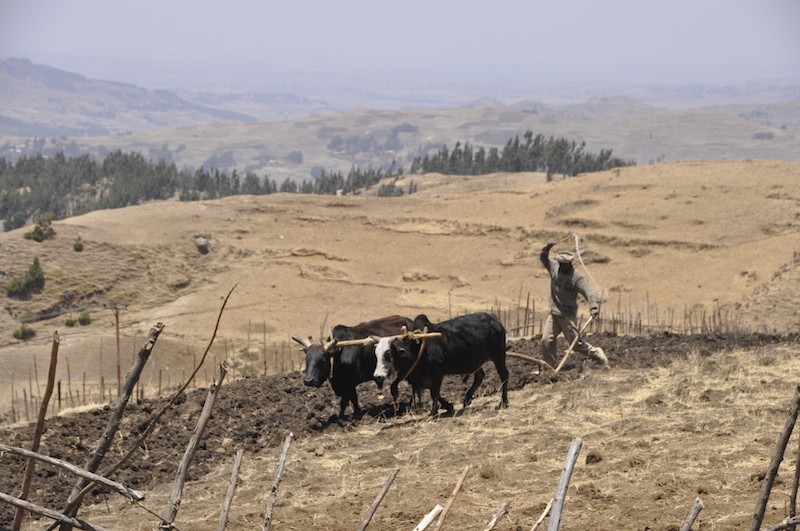
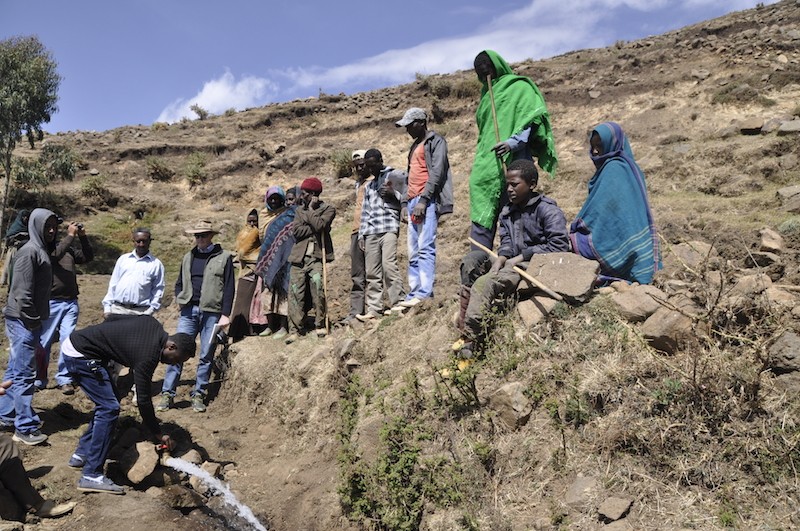
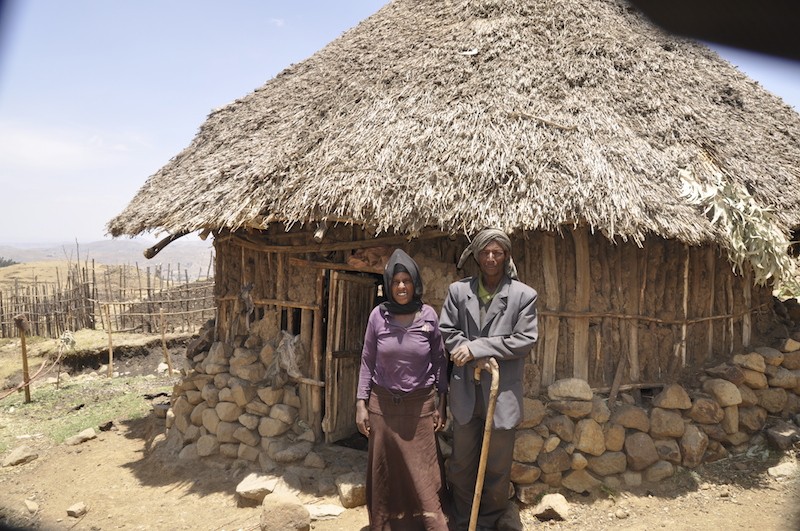
Saving the soils
The solution to stop the soil erosion was to terrace the steep land with rock hedges. This was not an easy solution to put in place, as the mountains covered vast land areas and landscaping was hugely time consuming, labor intensive and physically tough. The project team capitalized on the government’s Safety Net Program where it supports young and unemployed people to undertake community work. Terracing, which otherwise would have not been affordable or possible, was achieved through this program, with almost the entire 7,500 hectares of the watershed terraced.
Revitalizing the soils
Although the terracing has been successful in reducing soil erosion, it will still take significant time for the soils to be revitalized. Some activities have been put in place to accelerate the process, including fertilizers and legumes. Legumes provide a triple win for the system: they release nitrogen to the soil, thus acting as natural fertilizer, are highly nutritious and provide a potential income source.
Capturing the water
Once the solutions were in place to save and revitalize the soils, the farmers’ next biggest need was reliable access to water. The stone terraces helped capture the rainwater, but more was needed, especially in dry season.
Tapping the groundwater
There is very little use of groundwater for agriculture in the Ethiopian highlands. Groundwater can radically turn subsistence agriculture into profitable prosperous businesses, however, it must be used sustainably. Eleven wells have now been dug for this watershed.
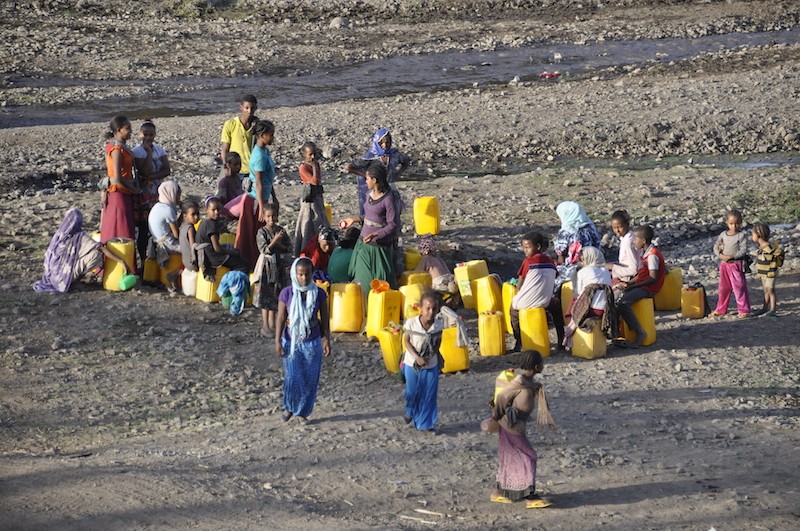
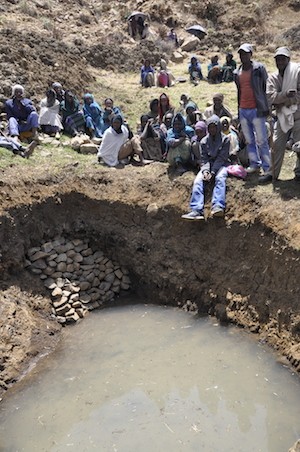
This well was dug using the government safety net scheme labor, taking three days to dig it by hand. Every household is putting 60 days of work in the Safety Net Program each year, with their efforts being compensated for by the government.

"I had seen carrots in the markets but never tasted them. We could just afford to eat what we grow. Now with the watershed work we have grown carrots and potatoes and now are trialing cherry trees. I have now eaten carrot and so many more foods.”
Key ingredients to success
Key ingredients have led to success. First, a community driven approach was critical. The local Wollo University and government were key partners to lead the overall process, while ICRISAT played the role of a catalyst and provided technical backstopping as needed. Tackling the most critical issues first was important, which in this case was to stop soil erosion and provide access to water.
Every step of the way the solutions were scientifically tested to ensure their effectiveness and sustainability. Local bi-laws were also in place to support the solutions was also important. The final key element for success was the holistic approach – developing or improving all the areas of the agricultural value chain as needed. This is still in process but well underway.
Solutions and benefits so far
Although the Yewol watershed management project was focused on benefiting the impoverished communities in the mountains, both the upstream mountain communities and the downstream valley communities have benefited.
The mountain communities benefited through the following:
- Erosion was minimized due to the terracing and planting of trees and fodder. The terraces slowed the water flow during the heavy rains and hindered the soil from being washed away. The trees and fodder also hold the soil and stabilize it so it is not washed away by the next rains.
- More water was available due to rainwater harvesting structures put in place.
- Production and productivity increased also due to the introduction of better varieties of crops for both fodder and food.
- The communities were given access to groundwater, which will provide significantly more water that other options and should make a major difference in agricultural production and yield.
- Diversity on the farms led to a more sustainable system and better nutrition for the soils and the people.
- As the water is collected on farm there was less need for the family members to walk long distances to collect water. The health extension workers teach them how ensure the water is fit for drinking by filtering the water through cloth and then sand.
The valley communities benefited significantly because:
- Large quantities of soil/silt, sand and rocks use to come down from the highlands and destroy the lowlands. This destruction has stopped due to the terraces in the highlands.
- The terraces also slowed the run off of the water and so recharged the groundwater, which has recharged the streams downstream.
- More land in the valley can be irrigated, which raised productivity. In 2014, the irrigated land in the valley increased almost five-fold, from 200 acres to 940 acres because of the extra water available.
- As the highlands gradually have more water available during the dry months, livestock is being kept in the highlands for grazing and are not encroaching on the lowlands. This saves the extra pressure on the lowlands and potential conflicts.
- Equipment has now been installed to monitor water flows and siltation. The quantitative data will be available for closer monitoring of the watershed.


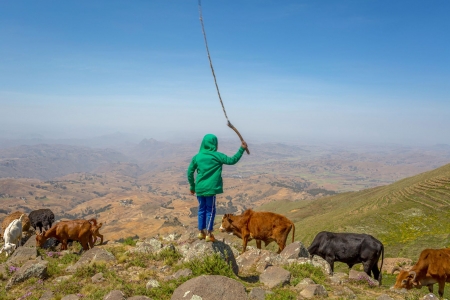
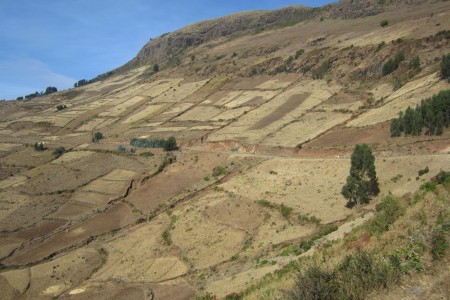



_low.pdf__0/index.jpg?itok=6BspXzbc)